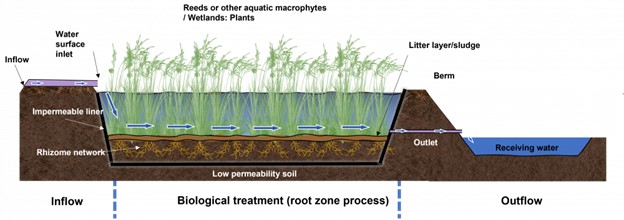
Welcome to the latest Open Access Ambassador Spotlight Blog!
Our OA Ambassadors raise awareness in their local communities about global OA movements as well as related opportunities through IWA Publishing. They are representatives of both the International Water Association and IWA Publishing and our joint goals to empower the next generation of water leaders and to shape the future of the water sector. These blog posts highlight their specialty and research focus, as well as emphasising the importance of Open Access publishing.
This week's blog is written by Abdurrahman Aliyu, an MSc student at the Pan-African University Institute for Water and Energy Sciences, whose research covers the recovery of resources from wastewater, rainwater harvesting, and nature-based solutions. Connect with Abdurrahman on LinkedIn.

In the ongoing global efforts to reduce or prevent the emission of greenhouse gases and strive towards achieving net-zero carbon emissions, where the release of these gases is balanced by their capture and storage, innovative solutions are emerging on the environmental horizon. One such innovative approach is the use of constructed wetlands. This engineered system of artificial wetlands is designed and constructed to mimic natural processes involving wetland vegetation, soil, and microbes to treat wastewater.
What Are Constructed Wetlands?
A constructed wetland is an organic wastewater treatment system designed to replicate and enhance the natural processes responsible for water purification, similar to those found in natural wetland ecosystems. This sustainable approach relies on the collective action of plants, microorganisms, and substrates to function as an efficient filtration and purification system.
The fundamental process begins with the slowing of water as it enters the constructed wetland, facilitating the sedimentation of solids. As water passes through the wetland, plant roots and the substrate work to remove larger particles from the wastewater. What follows is a natural transformation of organic matter, which occurs as pollutants and nutrients are broken down and absorbed by the resident bacteria and plants, effectively eliminating them from the water.
Constructed wetlands come in various designs, including vertical and horizontal variants. Vertical wetlands are space-efficient but require additional energy for operations like pumping or siphoning. In contrast, horizontal wetlands leverage gravity and the natural topography of the land, minimizing energy consumption. The flexibility in design, materials, and technology allows for adaptation to local conditions and land availability, making constructed wetlands a versatile and sustainable solution for wastewater treatment and environmental conservation.

Figure 1: A labelled schematic Image of a constructed Free-water surface flow wetland (https://wiki.sustainabletechnologies.ca/wiki/Wetlands)
Climate Change Mitigation through Carbon Sequestration
Climate change mitigation through carbon sequestration is key to the significance of constructed wetlands. In their natural state, wetland ecosystems are renowned for their ability to serve as optimal environments for sequestering and storing carbon dioxide (CO2) from the atmosphere. As natural wetlands face continued destruction due to rapid urbanization, constructed wetlands emerge as a vital solution to replicate their functions. Their sustainable utilization as carbon sinks represents a promising initiative to mitigate climate change. The magnitude of carbon storage achieved by these wetlands varies depending on factors like wetland type, size, vegetation, soil depth, and pH, among other factors. Nevertheless, their contribution to reducing greenhouse gas emissions and fostering sustainable, resilient communities cannot be understated.
Constructed wetlands, when integrated into urban planning, can make significant contributions to carbon net zero targets for cities. By mimicking natural wetland processes, these engineered systems help capture and store CO2, effectively reducing the overall carbon footprint of urban areas. They can also contribute to public health goals in cities and regions by enhancing air quality and providing accessible greenspaces. They meet local community needs for wastewater treatment while keeping maintenance costs low. Even though small-scale constructed wetlands sequester relatively small amounts of carbon, their significance as carbon sinks becomes substantial when considering the vast energy savings compared to equivalent wastewater treatment plants. This not only helps with climate change mitigation but also ensures efficient and eco-friendly wastewater treatment practices within communities.
In conclusion, constructed wetlands stand as a promising solution in the fight against climate change. These engineered ecosystems, replicating natural wetland processes, offer carbon sequestration, wastewater treatment, and environmental benefits. Their adaptability to local conditions and low maintenance costs make them a sustainable choice. As we strive for a greener and more resilient future, embracing such eco-friendly infrastructure is essential.